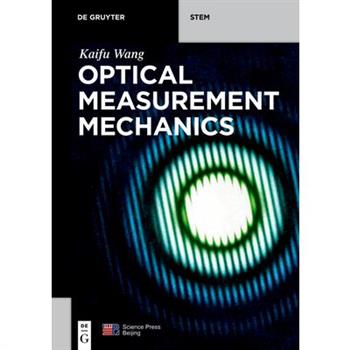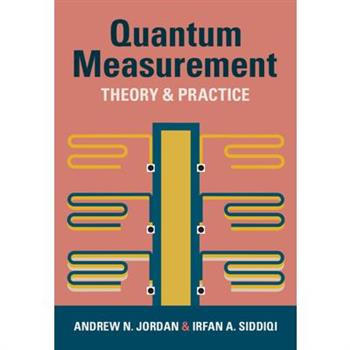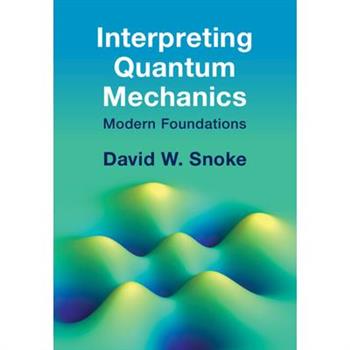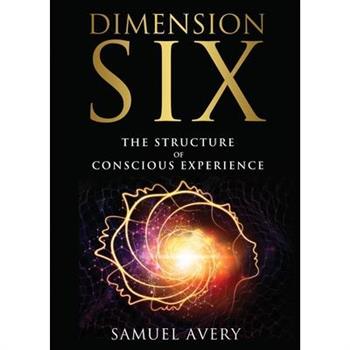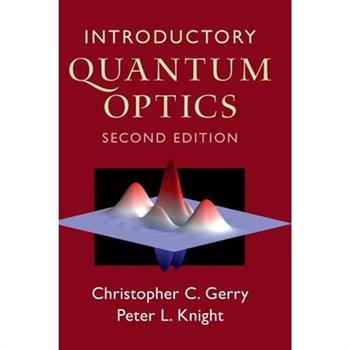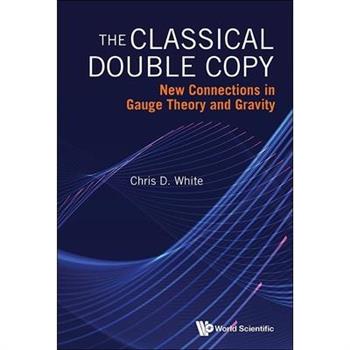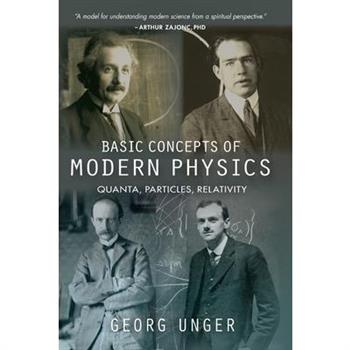Optofluidics
This introduction into the multidisciplinary area of optofluidics offers the necessary foundations in photonics, polymer physics and process analytics to students, engineers and researchers to enter the field. All basic ingredients of a polymer-based platform as a foundation for quick and compact solutions for chemical, biological and medical sensing and manipulation are developed.
Optical Measurement Mechanics
The book introduces the fundamentals of optical measurement mechanics, and discusses different types of interferometry, including (Digital) Holographic Interferometry, (Digital) Speckle Interferometry, Moir矇 Interferometry, Digital Image Correlation and Particle Image Velocimetry. It is an essential reference for graduate students, scientists and practitioners from both universities and research laboratories.
Quantum Mechanics
This textbook provides ample opportunities for practice and real experimental demonstrations. Conceptual understanding and mastering key techniques are enhanced by rigorous derivations, numerous worked examples, more than 300 exercises, about 150 problems and 16 computer codes. The preface summarizes all of the key concepts and formulas, along with a detailed schedule for teaching. The first three chapters introduce the quantum idea, wave-particle duality, operators and measurement. The Noether theorem is invoked to introduce the Schr繹dinger equation, followed by applications to infinite and finite quantum wells, quantum tunneling, harmonic oscillators, Heisenberg equation of motion, uncertainty principle, blackbody radiation and photoelectric effect. Chapters 4 and 5 are on angular momentum, the hydrogen atom and time-independent approximate methods. Chapters 6 and 7 are on spin and time-dependent perturbation theory. Chapters 8, 9 and 10 are on molecular orbitals, energy bands, quantum transport, scanning tunneling microscopy, lattice vibrations, Berry phase and quantum computing. The book is intended for a one-semester or one-year course and is also appropriate for researchers in related fields.
The Two Monopole Particle Universe
I was born in Camberwell, South East London, UK just after the war, where there were many bomb sites and houses that were partially collapsed yet still being lived in. This was the norm and I never took any notice of it.This was an era where everything was valued, we made things out of anything we could get our hands on, like pieces of old broken bikes, to make into one we could ride. This continued with motorcycles and cars which I made from spares, anything new was just a dream.This may be where I get my inventive mind, which allows me to think outside of the box, Invent and Patent things and secure registered design. I have always been an odd bod and have never accepted anything I am told unless I can rationalise it to myself. This got me into trouble when I was at school, because the teachers resented being challenged by me. Mind you, it didn't do me any favours when I always thanked the teacher after being slippered or caned.Everyone's ideas are equally valuable, no matter what age or level of education.My advice to anyone reading this is: 'Question everything, and never be belittled by anyone'.
Microwave Photonics
MICROWAVE PHOTONICS Overview of techniques in the field of microwave photonics, including recent developments in quantum microwave photonics and integrated microwave photonics Microwave Photonics offers a comprehensive overview of the microwave photonic techniques developed in the last 30 years, covering topics such as photonics generation of microwave signals, photonics processing of microwave signals, photonics distribution of microwave signals, photonic generation and distribution of UWB signals, photonics generation and processing of arbitrary microwave waveforms, photonic true time delay beamforming for phased array antennas, photonics-assisted instantaneous microwave frequency measurement, quantum microwave photonics, analog-to-digital conversion and more. The text is supported by a companion website for instructors, including learning objectives and questions/problems to further enhance student learning. Written by key researchers in the field, Microwave Photonics includes information on: Group-velocity dispersion and nonlinear effects in fibers, light coherence in light sources, phase and intensity modulators, photodetectors, and fiber Bragg gratings Injection locking, phase lock loops, external modulation, opto-electronic oscillators, and array waveguide gratings Photonic microwave delay-line filters with negative and complex coefficients and non-uniformly spaced photonic microwave delay-line filters Double- and single-sideband modulation, radio over fiber networks, and microwave photonics to coherent communication systems UWB generation, coding, and distribution over fiber, and instantaneous microwave frequency measurement via power monitoring True time delay beamforming Exploring the subject in depth, with expansive coverage of techniques developed in the last 30 years, Microwave Photonics is an essential reference for graduate students and researchers to learn microwave photonic technologies.
Fiber Optics
���� Dive into the world of Fiber Optics with our exclusive book bundle! ����Unlock the secrets of modern communication networks and data transmission systems with "Fiber Optics: Networking and Data Transmission in Action" bundle. ����Book 1 - ���� Fiber Optics 101: A Beginner's Guide to Networking and Data Transmission Perfect for newcomers, this book lays the foundation of fiber optics, from basic principles to networking protocols. ����Book 2 - ���� Mastering Fiber Optic Networks: Advanced Techniques and Applications Take your knowledge to the next level! Learn advanced techniques and practical applications in telecommunications and beyond. ����Book 3 - ���� Fiber Optic Infrastructure Design and Implementation: Practical Strategies for Professionals Essential for professionals, this book offers practical advice on planning, deployment, and troubleshooting of fiber optic projects. ����️Book 4 - ���� Cutting-Edge Fiber Optics: Emerging Technologies and Future Trends in Networking Stay ahead of the curve! Explore the latest advancements and future trends shaping the field of fiber optics. ����Whether you're a beginner, an expert, or somewhere in between, this bundle has something for everyone interested in the fascinating world of fiber optics. ����Don't miss out on this opportunity to elevate your knowledge and skills in one of the most exciting fields of modern technology! Get your bundle today! ����✨
Building Quantum Computers
The global race to build the world's first quantum computer has attracted enormous investment from government and industry, and it attracts a growing pool of talent. As with many cutting-edge technologies, the optimal implementation is not yet settled. This important textbook describes four of the most advanced platforms for quantum computing: nuclear magnetic resonance, quantum optics, trapped ions, and superconducting systems. The fundamental physical concepts underpinning the practical implementation of quantum computing are reviewed, followed by a balanced analysis of the strengths and weaknesses inherent to each type of hardware. The text includes more than 80 carefully designed exercises with worked solutions available to instructors, applied problems from key scenarios, and suggestions for further reading, facilitating a practical and expansive learning experience. Suitable for senior undergraduate and graduate students in physics, engineering, and computer science, Building Quantum Computers is an invaluable resource for this emerging field.
Rhic
This study started in February, 2013 at the Collider-Accelerator Department of BNL. During the study, the technique of independent component analysis (ICA) was first introduced to RHIC for a systematic estimation of RHIC BPM noise performance and turn-by-turn (TBT) beam position monitor (BPM) data based optics measure- ment. The beta-beat response matrix based global correction scheme and the method of arc beta-beat correction using horizontal closed orbit at sextupoles were developed for RHIC. These techniques were successfully demonstrated in two beam experiments with a total of 4 hours' beam time. In the meantime, various software packages were developed to facilitate the beam experiments and future studies.
Sound Reporting, Second Edition
An indispensable guide to audio journalism grounded in NPR's journalistic values and practices, with tips and insights from its top reporters, hosts, editors, producers, and more. A lot has changed in media in recent years, but one thing that remains steadfast is National Public Radio's (NPR) position as a trusted source of news in the United States. Now producing dozens of shows and podcasts, plus livestreams and coverage on other media platforms, NPR is the leading authority on reporting, writing, and delivering audio news and storytelling to today's diverse audiences. In this completely revised guide, audio journalism trainer Jerome Socolovsky offers a look into just how NPR does it, following the same journey a story would from idea to the moment it reaches its listeners. Based on more than eighty interviews with producers, reporters, editors, hosts, and other NPR staffers, Sound Reporting reveals how stories get pitched; how they are reported, produced, written, edited, voiced, and tailored to multiple media formats; and how shows and podcasts are put together. It begins with a presentation of NPR's values and includes a new chapter on journalist safety, a topic of timely importance. Podcasts, now part of the mainstream of the media universe, are treated alongside traditional programs throughout. In these pages, the voices of NPR staff offer a glimpse into their profession. Discover how correspondent Ruth Sherlock overcame seemingly insurmountable odds as she raced to the scene of a devastating earthquake in Turkey, the four main ways Ramtin Arablouei incorporates music into podcasts, and how "Weekend Edition" host Ayesha Rascoe touches listeners so deeply she received a pair of homemade potholders in the mail from one of them. Reading this book is like sitting in a room full of top-notch producers, seasoned correspondents, trusted hosts, and rigorous editors--all telling you inspiring stories about their craft to help you learn from their experience. At a time when the legitimacy and authority of journalism are under critique, transparency into how the news is made is more important than ever. This book offers a fascinating look behind the scenes at a premier public media organization and will be a trusted resource for anyone in or exploring a future in audio journalism.
The Baofeng Radio Revolution
Master Communications in Uncertain Times: Turn Your Baofeng Radio Into a Survival Lifeline, Even as a Beginner!Are you overwhelmed by the complexity of two-way radios or how to get started?Are you concerned about staying connected during an emergency or when technology fails?Are you searching for a reliable way to communicate while hiking or embracing off-grid living?Discover the unmatched clarity and dependability of Baofeng radios.The Baofeng Radio Revolution: The Beginner Guerilla's Guide goes beyond a standard handbook, offering a comprehensive path to mastering these essential devices. Perfect for everyone from outdoor adventurers to emergency preppers and complete beginners, this guide transforms the challenging world of amateur radio into an accessible, vital skill for today's uncertain times.Inside, you'll unearth: Comprehensive Model Overview: Understand the specifics of various models to select the perfect radio for your communication needs.Simplified Technical Understanding: Demystify technical aspects of radio with easy-to-understand explanations, making advanced radio operation accessible to everyone.Legal and Ethical Usage: Navigate the FCC licensing process and understand the legalities of operating your Baofeng radio responsibly.Versatile Usage Scenarios: Discover the utility of Baofeng radios across various activities, enhancing safety and coordination in every adventure.Emergency Preparedness: Learn how to create an emergency communication plan and power your Baofeng during crisis situations.Expert Programming Guidance: Learn programming techniques for various scenarios, from routine comms to critical missions.Speak Radio: A complete glossary of radio and technical terms are defined for you. Plus, get the necessary Q-codes and the NATO Phonetic Alphabet needed to speak radio!A Beginner's Plan: A simple step-by-step path that any beginner can follow to get set up with your first Baofeng and licensed easily!So, why is this book unlike any other? It equips you with the knowledge to use your radio effectively in any scenario, ensuring you're always connected, prepared, and communicating, even as a radio beginner. Whether you're gearing up for a hiking trip, living off-grid, preparing for emergencies, or just exploring the world of ham radio, this is your book.If you want to harness the power of Baofeng radios for reliable communication in any situation, from everyday needs to emergency scenarios, then click the 'Add to Cart' button now!
The Baofeng Radio Revolution
Master Communications in Uncertain Times: Turn Your Baofeng Radio Into a Survival Lifeline, Even as a Beginner!Are you overwhelmed by the complexity of two-way radios or how to get started?Are you concerned about staying connected during an emergency or when technology fails?Are you searching for a reliable way to communicate while hiking or embracing off-grid living?Discover the unmatched clarity and dependability of Baofeng radios.The Baofeng Radio Revolution: The Beginner Guerilla's Guide goes beyond a standard handbook, offering a comprehensive path to mastering these essential devices. Perfect for everyone from outdoor adventurers to emergency preppers and complete beginners, this guide transforms the challenging world of amateur radio into an accessible, vital skill for today's uncertain times.Inside, you'll unearth: Comprehensive Model Overview: Understand the specifics of various models to select the perfect radio for your communication needs.Simplified Technical Understanding: Demystify technical aspects of radio with easy-to-understand explanations, making advanced radio operation accessible to everyone.Legal and Ethical Usage: Navigate the FCC licensing process and understand the legalities of operating your Baofeng radio responsibly.Versatile Usage Scenarios: Discover the utility of Baofeng radios across various activities, enhancing safety and coordination in every adventure.Emergency Preparedness: Learn how to create an emergency communication plan and power your Baofeng during crisis situations.Expert Programming Guidance: Learn programming techniques for various scenarios, from routine comms to critical missions.Speak Radio: A complete glossary of radio and technical terms are defined for you. Plus, get the necessary Q-codes and the NATO Phonetic Alphabet needed to speak radio!A Beginner's Plan: A simple step-by-step path that any beginner can follow to get set up with your first Baofeng and licensed easily!So, why is this book unlike any other? It equips you with the knowledge to use your radio effectively in any scenario, ensuring you're always connected, prepared, and communicating, even as a radio beginner. Whether you're gearing up for a hiking trip, living off-grid, preparing for emergencies, or just exploring the world of ham radio, this is your book.If you want to harness the power of Baofeng radios for reliable communication in any situation, from everyday needs to emergency scenarios, then click the 'Add to Cart' button now!
Waves in an Impossible Sea
Big Think's Best Science Book of 2024 A theoretical physicist takes readers on an awe-inspiring journey--found in "no other book" (Science)--to discover how the universe generates everything from nothing at all: "If you want to know what's really going on in the realms of relativity and particle physics, read this book" (Sean Carroll, author of The Biggest Ideas in the Universe). In Waves in an Impossible Sea, physicist Matt Strassler tells a startling tale of elementary particles, human experience, and empty space. He begins with a simple mystery of motion. When we drive at highway speeds with the windows down, the wind beats against our faces. Yet our planet hurtles through the cosmos at 150 miles per second, and we feel nothing of it. How can our voyage be so tranquil when, as Einstein discovered, matter warps space, and space deflects matter? The answer, Strassler reveals, is that empty space is a sea, albeit a paradoxically strange one. Much like water and air, it ripples in various ways, and we ourselves, made from its ripples, can move through space as effortlessly as waves crossing an ocean. Deftly weaving together daily experience and fundamental physics--the musical universe, the enigmatic quantum, cosmic fields, and the Higgs boson--Strassler shows us how all things, familiar and unfamiliar, emerge from what seems like nothing at all. Accessible and profound, Waves in an Impossible Sea is the ultimate guide to our place in the universe.
Quantum Mechanics in Curved Spacetime
Quantum Mechanics in Curved Spacetime: A Comprehensive Exploration takes readers on a fascinating journey through the fusion of quantum mechanics and general relativity, unraveling the mysteries of quantum fields in curved geometries, black holes, quantum cosmology, entanglement, and more. This comprehensive guide offers a mathematical framework and explores the cutting-edge research in quantum gravity and the potential applications in quantum technology. Join Kuro Aksara as they navigate the uncharted territory where spacetime and probability blend, providing insights into the fundamental nature of the universe.
Paving the Way for 5G Through the Convergence of Wireless Systems
In the ever-evolving telecommunication industry, smart mobile computing devices have become increasingly affordable and powerful, leading to significant growth in the number of advanced mobile users and their bandwidth demands. Due to this increasing need, the next generation of wireless networks needs to enable solutions to bring together broadband, broadcast, and cellular technologies for global consumers. Paving the Way for 5G Through the Convergence of Wireless Systems provides innovative insights into wireless networks and cellular coexisting solutions that aim at paving the way towards 5G. Through examining data offloading, cellular technologies, and multi-edge computing, it addresses coexistence problems at different levels (i.e., physical characteristics, open access, technology-neutrality, economic characteristics, healthcare, education, energy, etc.), influencing networks to provide solutions for next generation wireless networks. Bridging research and practical solutions, this comprehensive reference source is ideally designed for graduate-level students, IT professionals and technicians, engineers, academicians, and researchers.
The Alethiology Proper
This Book is the first volume of the series "The Alethiology Proper". The Alethiology Proper is a new and independent discipline of Study (Science) which is a pure logical study of the nature of Reality and Truth. Etymologically "The Alethiology Proper" is defined as the "the Science of Truth Proper". In this study, Reality and Truth are taken as dual realities of the Same. Therefore, "The Alethiology Proper" can also be defined as "the Science of Reality Proper". This Study of Alethiology Proper has its unique methodology of study which has enabled to explore the ultimate answers of the Universe. Through this Study we can explore the Beginning and End of the Universe with absolute certainty. This Study has access even to Nothing and shows with absolute certainty what Nothing is and how Something came out of Nothing. Until now there were many unanswered questions about the Origin of Universe, Existence of God, Origin of Life etc. There are many conflicting theories, ideas, philosophies regarding the Truth of Everything due to the absence of Certainty of the Truth. This Study answers the questions of Origin of Universe, God, Life, Reality and Truth with absolute certainty. This study has bridged the two extremes (though in actuality are not) of Reality, namely Science and Religion, Physical and Spiritual, Seen and Unseen. Therefore, both realities can now be scientifically studied and confirmed with absolute certainty. This Study has independently explored the Reality and have come up with the answer that there is indeed God, a Triune Eternal Living Being. Before I say anything further, I would like to give assurance that this study is purely scientific which is purely objective in nature, therefore, all the ideas of this book could be experimentally verified with absolute certainty. This is not a mere philosophical book filled with subjective opinions or interpretations, but this is a purely objective and scientific study. If the ideas of this book are not equivalent in certainty as the Truth 2+2=4 is, then it may be considered as a fictional work.
Aberdeen Calling
This book relates the history of the BBC in Aberdeen from its inception in 1923 right up to the present day. This book contains fascinating information about the origin of 'Station 2BD' in Belmont Street. There are interesting profiles of the people and personalities involved. It details the search for new premises and the establishment of the famous Beechgrove Terrace location. It also documents events during WWII, the arrival of television and the local radio years.. Now greatly expanded with more information and fully illustrated with original photographs, 'Aberdeen Calling' is a fascinating look at the BBC in the North East of Scotland.
An Interactive Guide to Quantum Optics
This book provides the reader with an interactive experience of quantum optics, suitable for Final year undergraduate quantum optics students, and new graduate students in AMO physics.
Mode-Locked Lasers: Introduction to Ultrafast Semiconductor and Fiber Lasers
This invaluable book provides a comprehensive treatment of the design and application of Mode Locked Lasers and Short Pulse Generation. With the advances in semiconductor laser and fiber laser technologies in the 1980s to now, these devices have been made compact, refined, and developed for a wide range of applications including further scientific studies.Semiconductor mode-locked lasers are stable pulse sources and can be made over a range of wavelengths where laser operation is feasible. Rare earth doped fiber lasers or planar waveguides extend this range further and can provide compact pulsed sources. The principles of operation, analysis, design and fabrication of these sources are described. Recent results on high repetition rate and high-power pulse generation from these compacts sources are also described, together with current and future directions of application of these types of laser sources.Mode-Locked Lasers: Introduction to Ultrafast Semiconductor and Fiber Lasers is self-contained and unified in presentation. It can be used as an advanced text by graduate students and by practicing engineers. It is also suitable for non-experts who wish to have an overview of mode-locked lasers and pulse generation. The explanations in the book are detailed enough to capture the interest of the curious reader and complete enough to provide the necessary background to explore the subject further.
Quantum Measurement
This book adopts a novel, physics-first approach to quantum measurement, using physical experiments as the basis to describe the underlying mathematical formalism. Topics covered include weak measurements, quantum measurement reversal, quantum trajectories and the stochastic path integral formalism. The theory of quantum measurement is also covered in detail, including discussion of how it can be tested and demonstrated in a laboratory: how to build quantum-limited amplifiers, fundamental noise limits imposed on measurement by quantum mechanics, and the design of superconducting circuits. This text is an excellent introduction for students with a basic understanding of quantum mechanics wanting to learn more about measurement theory, and the inclusion of a wide selection of end-of-chapter exercises make this book ideal for emerging courses on the topic. Key chapters introducing the foundations of quantum computing and the history of measurement theory are equally accessible to a broader, less specialised audience.
Interpreting Quantum Mechanics
This novel text directly addresses common claims and misconceptions around quantum mechanics and presents a fresh and modern understanding of this fundamental and essential physical theory. It begins with a non-mathematical introduction to some of the more controversial topics in the foundations of quantum mechanics. For those more familiar with the theoretical framework of quantum mechanics, the text moves on to a general introduction to quantum field theory, followed by a detailed discussion of cutting-edge topics in this area such as decoherence and spontaneous coherence. Several important philosophical problems in quantum mechanics are considered, and their interpretations are compared, notably the Copenhagen and many-worlds interpretations. The inclusion of frequent real-world examples, such as superconductors and superfluids, ensures the book remains grounded in modern research. This book will be a valuable resource for students and researchers in both physics and the philosophy of science interested in the foundations of quantum mechanics.
Light Quanta
Many may wonder about the title of this book. But one thing to note is that in 1951, Einstein told his friend Basso that, All these fifty years of conscious brooding have brought me no nearer to the answer to the question "What are light quanta?" Nowadays every Tom, Dick, and Harry thinks he knows it, but he is mistaken.This phrase has been mentioned by many people in their lectures, research papers and books. I think they know the exact meaning. Einstein doubted that there would be nothing like the postulated light quanta. But people are cheering for light quanta now. He was probably worried that something else would turn up later, showing that the light quanta were a trick used for the photoelectric effect. Because light is a wave and the energy in the wave cannot converge to a certain point, which he called light quanta. Secondly, he could not say what brings that energy together. What exactly that energy is, and why it depends on the frequency of the light wave, he could not tell. He was worried that it was just a trick used to solve the photoelectric effect.Read for where the classical theory went wrong in solving the photoelectric effect and how Einstein was wrong.Light is an electromagnetic wave. It contains asymmetric electric field which is responsible to produce the photoelectric effect. Any charged particle follows a curved path in asymmetric electric fields. Magnetic field is the effect of asymmetric electric field. Therefore, magnetic force increases with increase in frequency of the electromagnetic wave which is responsible to produce the photoelectric effect. Also, there is a phase difference of 90 degrees in electric field and magnetic field in electromagnetic. Both can be experimentally proved. See 'Photoelectric effect: the key point'.One can estimate total length of single light wave emitted by an atom using Air-wedge method. Sodium atom emits light wave having near abut 600 crests and troughs. So that electron producing it must vibrate 600 times at one place in the atom. So, if it is moving in orbit, how can produce such long light wave? See "The total length of single light wave emitted by sodium atom'.If you ask an uneducated person if all the electrons in an atom move around the nucleus, can a solid with constant shape be formed? So, he will say no but gas may be formed from such atoms. Electrons in an atom do not move in orbits. They can hold spin motion, which will cause to increase the magnetic repulsion between the paired electrons, and remain stationary. See 'Spin atomic model'.As the effect of asymmetric electric field is magnetic field, it is not as we understand magnetic field. A bar magnet has two electric field cones. Read 'What is Magnetic Field?'. This explains why magnetic monopoles are absent in the universe.Electric field in a light ray applies force on electric field of electron. Force is mutual. The electric field of the electron also exerts a force on the electric field of the light, causing the light beam to deviate. Read the 'Deflection of light rays in electric fields'.Relative speed of light and ether, particle and fields are discussed in different way.A must-read for science enthusiasts and those intrigued by the mysteries of the universe.
Back-of-the-Envelope Quantum Mechanics
Dimensional and order-of-magnitude estimates are practiced by almost everybody but taught almost nowhere. When physics students engage in their first theoretical research project, they soon learn that exactly solvable problems belong only to textbooks, that numerical models are long and resource consuming, and that 'something else' is needed to quickly gain insight into the system they are going to study. Qualitative methods are this 'something else', but typically, students have never heard of them before.The aim of this book is to teach the craft of qualitative analysis using a set of problems, some with solutions and some without, in advanced undergraduate and beginning graduate Quantum Mechanics. Examples include a dimensional analysis solution for the spectrum of a quartic oscillator, simple WKB formulas for the matrix elements of a coordinate in a gravitational well, and a three-line-long estimate for the ionization energy of atoms uniformly valid across the whole periodic table. The pi癡ce de r矇sistance in the collection is a series of dimensional analysis questions in Integrable Nonlinear Partial Differential Equations with no dimensions existing a priori. Solved problems include the relationship between the size and the speed of solitons of the Korteweg-de Vries equation and an expression for the oscillation period of a Nonlinear Schr繹dinger breather as a function of its width.A new theme that appears in the second edition are the rare and exotic methods in elementary quantum mechanics. The new chapter covers quantum-mechanical supersymmetry, power index method, scale invariance, self-similarity, and circle inversion.
Quantum Optics
This revised new edition gives a unique and broad coverage of basic laser-related phenomena that allow graduate students, scientists and engineers to carry out research in quantum optics and laser physics. It covers quantization of the electromagnetic field, quantum theory of coherence, atom-field interaction models, resonance fluorescence, quantum theory of damping, laser theory using both the master equation and the Langevin theory, the correlated emission laser, input-output theory with applications to non-linear optics, quantum trajectories, quantum non-demolition measurements and generation of non-classical vibrational states of ions in a Paul trap. This fourth edition provides a new chapter on weak measurement, as well as a new chapter on complementarity. There is also new material included for atom optics and new problems have been added. Each topic is presented in a unified and didactic manner, and is accompanied by specific problems and hints to solutions to deepen the knowledge.
Dimension Six
Dimension Six is about physics, but it's about more than physics. It is a captivating exploration that transcends the boundaries of traditional physics and offers a fresh perspective on the enigmatic relationship between the physical world and consciousness.Modern physics, with its awe-inspiring revelations, beckons us to question the very fabric of reality. Why does space impose a cosmic speed limit, confining objects to move slower than light? How does mass transform and time warp under extreme velocities? The elusive nature of particles and the peculiarities of acceleration versus velocity in our daily experiences only deepen the intrigue. These phenomena, well-charted yet perpetually dazzling, happen at extreme dimensions - the very fast, the very small, the very massive, and the very distant. But the crux of these mysteries lies in the connection to the observer, to consciousness itself. In the absence of an observer, the existence of a material object becomes a perplexing quandary.Dimension Six beckons us to revisit our understanding of dimensions and their relationship with consciousness. Once perceived as fixed structures of an external world, dimensions are now revealed as fluid, bending, and merging realms at their extremes, courtesy of relativity theory and quantum mechanics. Is a dimension an intrinsic element of the material universe, or is it a cornerstone of consciousness itself?This book is written for those with some exposure to physical science - from basic physics courses to advanced Ph.D. studies. But most importantly, it is an invitation to those willing to venture beyond conventional thinking. Dimension Six sparks a paradigm shift by challenging the fundamental assumptions underpinning our comprehension of consciousness and physical reality.If you seek an insightful exploration of the perplexities in modern physics and a revelation of why we perceive the world as external and material, then this book promises not only intrigue but also enlightenment.
Fundamentals of Optical Waves and Lasers
This book discusses light, its properties as an electromagnetic wave, interaction with matter, and laser as an optical device. The first part discussions include qualitative arguments such as pictorial representations of the wave dynamics and analogy to other oscillatory systems to facilitate an intuitive understanding of the topics. The second part reviews light-matter interaction. It introduces the light-matter interaction while introducing the particular behavior of light, known as the photon, reviewing various properties of light waves resulting from the interaction with matters including the propagation of light in media. The last two sections focus on the fundamentals of lasers and the practical uses of lasers, including several techniques to control the spatial and temporal characteristics of laser beams. This book discusses acoustic waves' characteristics so that we can deepen our understanding of acoustic waves.
Magnetic Alchemy
Magnetic alchemy delves into the mesmerizing science behind iron's inherent attraction to magnets, uncovering the intricate chemistry orchestrating this magnetic symphony. At its core, this captivating phenomenon stems from the elemental composition and atomic structure of iron, intertwining with the laws of magnetism.Iron, a versatile metal abundant in the Earth's crust, possesses a unique atomic arrangement that endows it with magnetic properties. Its atomic structure allows for unpaired electrons, lending itself to ferromagnetism-the ability to become magnetized when exposed to a magnetic field. Within this atomic dance, the alignment of these unpaired electrons contributes to the magnetic personality of iron.The magnetic journey of iron converges with the principles of magnetism, where each magnetic field acts as a conductor orchestrating the alignment of iron's atomic magnets. When a magnetic field embraces a piece of iron, it nudges these atomic magnets into alignment, generating a magnetic force within the material. This alignment persists even after the external magnet is removed, creating a magnetic field in the iron itself-a state known as induced magnetism.However, the magic doesn't stop there. Heat plays a role in this magnetic ballet. At a specific temperature called the Curie point, iron loses its magnetic properties. The intense thermal energy disrupts the alignment of the atomic magnets, causing them to jostle and lose their magnetic coherence.The interplay of heat, atomic structure, and magnetic fields reveals the alchemical secrets behind iron's magnetic allure. This captivating chemistry doesn't solely fascinate scientists but also forms the bedrock of numerous technological advancements, from electromagnets powering machinery to the magnetic storage in our everyday devices.Understanding the magnetic enchantment of iron not only unravels the mysteries of fundamental physics and chemistry but also opens pathways to innovate and engineer magnetic materials, revolutionizing industries and amplifying our technological prowess. Magnetic alchemy, where the dance of atoms and fields converges, continues to illuminate the fascinating interplay of elements that underpin the captivating attraction of iron to magnets.
The Revolution in Quantum Technology
If you want to learn more about cutting edge quantum technology, read "The Revolution in Quantum Technology: How Game-Changing Tools Are Altering Our World." The author of this new book, Emil Kowalski, looks at how quantum technology will change our quickly changing digital world.Find out what quantum computing is all about. In this type of computing, quantum bits (qubits) are used instead of regular bits. This lets many computers work together to solve hard problems very quickly. Learn about the power of quantum communication, which changes how we share private information in a world that is becoming more and more connected by creating safe, unhackable lines of communication.Kowalski goes into detail about the rules of quantum mechanics, which makes the difference between conventional and quantum computing very clear. As the digital world goes through a paradigm shift, it's important to understand these key ideas in order to find your way around the quantum world.Learn more about the interesting world of quantum bits (qubits) and superposition, where quantum objects can be in more than one state at the same time. Kowalski takes the mystery out of the idea of superposition and the different ways it could be used. This helps the reader understand how complicated quantum systems work.Take a trip into the world of entanglement, where quantum objects become linked and can change each other's states even when they are far apart. Kowalski explains the part that entanglement plays in quantum computing, which opens up new ways to communicate and do computations.Learn about quantum gates and circuits, which are the building blocks of quantum programs. The author explains how these quantum structures will lead to huge improvements in computer power and the ability to solve problems.As the story goes on, Kowalski talks about quantum algorithms and how they might affect many areas, from security to solving optimization problems. Look at how we're about to change the way we solve hard problems and look at data in the quantum age."The Revolution in Quantum Technology" also explains the wide range of uses that can be improved by quantum technology, such as safe communication networks and better imaging methods. Find out how quantum technology is going to change fields like business, healthcare, and telecommunications.In a world where privacy and security are very important, this book looks at the flaws in traditional cryptography and presents the idea of quantum key distribution (QKD). Learn how quantum encryption, which can't be broken, makes sure that information is sent safely in a time when online threats are growing.This important and insightful book is a must-read for anyone who wants to understand how quantum technology could change the world. Learn all about how these game-changing tools are changing our world by diving into the quantum revolution with Emil Kowalski.
Background Independence in Classical and Quantum Gravity
It is often claimed that Einstein's magnum opus---his 1915 theory of General Relativity---is distinguished from other theories of space and time in virtue of its background independence. It's also often claimed that background independence is an essential feature of any quantum theory of gravity. But are these claims true? This book aspires to offer definitive answers to both of these questions, by (a) charting the space of possible definitions of background independence, and (b) applying said definitions to various classical and quantum theories of gravity. The outcome, in brief, is as follows: General Relativity is not unique by virtue of its background independence (and, indeed, fails to be background independent on some popular definitions); moreover, the situation in the case of quantum theories of gravity is delicate, because (i) there are viable such theories which (by some accounts, at least) fail to be background independent, but also (ii) theories (e.g. perturbative string theory) which have often been dismissed for (allegedly) being background dependent in fact, on many accounts, are better classified as background independent. In giving these answers in rigorous detail, this book seeks to elevate the standards and generality of future discussions of background independence in the foundations of spacetime theories.
Collected Writings of Edward Leedskalnin
2024 Reprint of Two Separate Publications Published in a Single Volume. Facsimile of the original edition and not reproduced with Optical Recognition Software. The Collected Writings of Edward Leedskalnin is a compilation of two of Leedskalnin's works, A Book in Every Home and Magnetic Current. This eccentric sculptor and amateur scientist devoted most of his life to creating a large complex of megalithic stones that he quarried and carved himself.Leedskalnin purchased a modest plot in Florida and began removing and relocating enormous stones from his land, moving them into position, and carving them entirely on his own as far as we know. The pieces include sculptures and carved stone furniture, as well as a two-story tower that served as his living quarters. Due to the scale of the project, some have dubbed it "Florida's Stonehenge." While it's unclear how Leedskalnin was able to complete it, it is all the more impressive considering his small stature and questionable health.Leedskalnin also spent two years testing magnets and recording his findings. These experiments would form the basis of Magnetic Current, published in 1945. In the book, Leedskalnin argues that electricity and magnetism are not separate phenomena but are instead two aspects of the same fundamental force, which he calls "magnetic current." He also proposes a new model of atomic structure and suggests that the fundamental particles of matter are tiny magnets that are constantly in motion.Leedskalnin presents a variety of experiments throughout the book, many of which involve the manipulation of magnetic fields using simple items like various magnets, car batteries, light bulbs, and coils of wire. He believed that his discoveries could provide insights into the mysteries of the universe, including the relative positions of the celestial bodies. Both works demonstrate Leedskalnin's unique view of the world and his eccentric personality. Though certainly eccentric, the two works offer an intriguing glimpse into the mind of a self-taught philosopher and inventor who had a unique perspective on the world around him.
Solitonic Neural Networks
This book delves into optics and photonic materials, describing the development of an intelligent all-optical system capable of replicating the functional building blocks of the biological brain. Starting with an analysis of biological neuronal dynamics and traversing the state of the art of neuromorphic systems developed to date, the book arrives at a description of neural networks realized through spatial soliton technology.After a brief introduction to the biology of neural networks (Chapter 1), the book delves into the description of the neuromorphic problem emphasizing the peculiarities of optical hardware developed to date. (Chapter 2). Chapter 3 is dedicated to the description of psychomemories, which represent the modeling of human learning according to the theories of modern neuro-psychology. This chapter provides the prerequisites for understanding how solitonic neural networks (SNNs) are able to learn and how they approach biological models. Chapter 4 focuses on the experimentation of solitonic optic neurons in thin layers of lithium niobate. Optical techniques for supervised and unsupervised learning are discussed. The entire chapter is accompanied by theoretical, simulative and experimental results. This chapter explains how an X-junction neuron is able to establish synapses, modify them, or erase them. The erasure of solitonic structures represents an important innovation in the field of nonlinear optics. Finally, Chapter 5 reports on the implementation of a network of neurons capable of processing information and storing it exactly as a human episodic memory does. The chapter ends with a number of insights into the lines of research that are currently being pursued on the basis of the results obtained.The book is meant for graduate students and researchers in the fields of optics, photonic applications, and biology. However, the main beneficiaries of this book are senior researchers in the fieldof nonlinear optics and artificial intelligence. To fully understand the results, it is important to have a basic knowledge of optical physics and neuron biology.
Theory of Electromagnetoelasticity
Theory of Electromagnetoelasticity presents a systematic and unique treatment of elastic, electric and magnetic interactions in solids including various thermal and dissipative effects such as viscoelasticity and electrical conduction. In this book, a general and nonlinear continuum theory is constructed. The fundamental building blocks of the theory -- the electromagnetic body force, couple and power -- are calculated from a multi-continuum model consisting of a lattice continuum for elastic deformation, a bound charge continuum for electric polarization, a circulating current continuum for magnetization, and a free charge fluid for electrical conduction. The multi-continuum model is simpler than the common charged particle model and reveals the underlying physics from a unique angle. The complete set of Maxwell's equations for the electromagnetic fields is included without the widely used quasistatic approximations of the electric and/or magnetic fields. The theory established can be used to describe different kinds of interactions between acoustic and optical fields or waves. Some linear problems are analyzed as examples to show some of the simplest elastic and electromagnetic couplings.
Spaces and Dimensions of Quantum Fields
What defines the essence of my technical and highly conceptual book is the fact that it renders Quantum Field Theory accessible to an as wide a circle of readers as possible without compromising the theory's physical and mathematical rigour. Not only will my book, for that matter, be of interest to research physicists and to graduate students of physics, it will also be of interest to undergraduate students of physics and to the non-academic but interested, discriminating and dedicated readers. Whereas all other published books and textbooks address either the experts, or the graduate students in Quantum Field Theory, my conceptual analysis addresses all readers: From academic professionals, especially those researchers who are active in other fields (condensed matter physics, atomic and laser physics, quantum mechanics, mathematics, chemistry, computer science, engineering, etc.), to the non-academic readers who may not be literate in mathematics and physics but have a capacity for conceptual abstraction and are willing to consistently apply it in order to understand Quantum Field Theory.
Optical Methods for Managing the Diabetic Foot
This book discusses optical technologies for Diabetic Foot management. It combines the current medical literature review with an overview of the technology and physics behind it. Thus, it is a single-source introduction to the topic. It can also be used as a reference source and practical guide for the use of technology. The particular focus is on low-cost technologies, including hyperspectral imaging, thermography, and endogenous bacterial fluorescence. Moving diagnostic modalities closer to the patient (e.g., primary care) allows the disease to be detected at an earlier stage, thus improving outcomes. However, while some optical technologies are available commercially, they have not received wide clinical adoption due to gaps in knowledge translation to mainstream medicine. This book aims to narrow this gap with practical illustrations. The book will be of interest to a broad range of healthcare professionals, clinical researchers, engineers, and decision-makers, who are dealing with complications of diabetes.Key Features: Reviews the current state of technologies Provides a practical guide with practical considerations and illustrations Supplies a 360-degree view of the combination of clinical information with a technology background and primers on physics and engineering
Physics--Problems, Solutions, and Computer Calculations
Knowledge of and skill in physics are essential foundations for studies in science and engineering. This book offers students an introduction to the basic concepts and principles of physics. It covers various topics specifically related to waves, sound, electricity, magnetism, and optics. Each chapter begins with a summary of concepts, principles, definitions, and formulae to be discussed, as well as ending with problems and solutions that illustrate the specific topic. Steps are detailed to help build reasoning and understanding. There are 250 worked problems and 100 exercises in the book, as well as 280 figures to help the reader visualize the processes being addressed. Computer calculations and solutions are carried out using wxMaxima to give insight and help build computational skills. The book is aimed at first-year undergraduate students studying introductory physics, and would also be useful for physics teachers in their instruction, particularly the exercises at the end of each chapter.
Optical Polymer Waveguides
Light signals in optical waveguides can be used to transmit very large amounts of data quickly and largely without interference. In the industrial and infrastructural sectors, e.g. in the automotive and aerospace industries, the demand to further exploit this potential is therefore increasing. Which technologies can be used to effectively integrate systems that transmit data by means of light into existing components? This is a central question for current research. So far, there have been some technical limitations in this regard. For example, it is difficult to couple the signal of an optical waveguide to other optical waveguides without interruption. There is also a lack of suitable fabrication technologies for three-dimensional waveguides, as well as design and simulation environments for 3D opto-MID. This book addresses these and other challenges.
Introductory Quantum Optics
This established textbook provides an accessible but comprehensive introduction to the quantum nature of light and its interaction with matter. The field of quantum optics is covered with clarity and depth, from the underlying theoretical framework of field quantization, atom-field interactions, and quantum coherence theory, to important and modern applications at the forefront of current research such as quantum interferometry, squeezed light, quantum entanglement, cavity quantum electrodynamics, laser-cooled trapped ions, and quantum information processing. The text is suitable for advanced undergraduate and graduate students and would be an ideal main text for a course on quantum optics. This long-awaited second edition builds upon the success of the first edition, including many new developments in the field, particularly in the area of quantum state engineering. Additional homework problems have been added, and content from the first edition has been updated and clarified throughout.
Classical Double Copy, The: New Connections in Gauge Theory and Gravity
Our current understanding of nature is in terms of matter that is acted on by forces. There are four fundamental forces, of which three are described by so-called gauge theories, a type of quantum field theory. The fourth force, gravity, is best described by general relativity, and our traditional ways of thinking about gauge theories and gravity look completely different from each other.In recent years, an exciting new correspondence called the 'double copy' has emerged, which suggests that the above theories may be much more closely related than previously thought. Inspired by previous work in string theory, it originated in the study of how particles interact, but has since been generalised to show that many gravitational quantities can be simply obtained by recycling simpler gauge theory results. This has significant practical applications -- such as new calculational tools for astrophysics -- but is also of conceptual importance, in suggesting that our current ways of thinking about fundamental physics are hiding a vast underlying structure.This book reviews our current theories of fundamental physics, before describing in detail how the double copy was discovered, how it can be applied to different types of object in gauge or gravity theory, and what its current and future applications are. No prior knowledge of quantum field theory or string theory is assumed, such that the book will be of interest to a broad audience of physicists and mathematicians.
Tiny Quantum, Giant Revolution
The first industrial revolution was accompanied by the emergence of the School of Engineering, the second brought about the School of Electrical Engineering, and the third digital revolution led to the School of Information. It is now obvious that the change in this quantum revolution must lead to the emergence of the School of Quantum Science and Technology. Quantum technology can develop comprehensively through the integration of science, technology, engineering, art and mathematics (STEAM). In 1925, Heisenberg developed the Matrix Mechanics, cracking the mysteries of the Quantum world. Coinciding with the 100th anniversary of Matrix Mechanics, in 2024, the General Assembly of the United Nations proclaimed 2025 the 'International Year of Quantum Science and Technology, ' along with a year-long initiative celebrating the profound impacts of quantum science on technology, culture, and our understanding of the natural world.This book outlines the importance of the 'Second Quantum Revolution, ' introduces quantum computers, quantum communications, and quantum sensors, and then provides a framework for the emergence of the quantum Internet of Things. What basic quantum literacy should modern citizens have in this era? The 'Second Quantum Revolution, ' where quantum knowledge and engineering technology are once again combined, will provide faster, more effective, and more sensitive quantum facilities to accelerate cross-field exploration, and will also make human life more comfortable and convenient than ever before.In the 'First Quantum Revolution' in the 20th century, humans learned quantum science from nature and used existing materials to make quantum components. In the 'Second Quantum Revolution' in the 21st century, humans further used quantum science to construct quantum engineering. We now make materials and components that are not found in nature and assemble new quantum machines to benefit mankind! This is the stage of a glorious quantum era, which is a hundred times more brilliant than the past classical physics era.
The Quark & the Jaguar
The Santa Fe Institute celebrates one of its founders with a new edition of a seminal work by the late Nobel laureate Murray Gell-Mann. Originally published in 1994, The Quark & the Jaguar spans the simple and the complex, examining the relationship between the fundamental laws of physics and the complexity and diversity of the natural world.Neither autobiography nor strictly scientific treatise, this uniquely personal and unifying vision reflects Gell-Mann's broad expertise, curiosity, and passion for topics as disparate as archaeology, linguistics, and computing.
Tiny Quantum, Giant Revolution
The first industrial revolution was accompanied by the emergence of the School of Engineering, the second brought about the School of Electrical Engineering, and the third digital revolution led to the School of Information. It is now obvious that the change in this quantum revolution must lead to the emergence of the School of Quantum Science and Technology. Quantum technology can develop comprehensively through the integration of science, technology, engineering, art and mathematics (STEAM). In 1925, Heisenberg developed the Matrix Mechanics, cracking the mysteries of the Quantum world. Coinciding with the 100th anniversary of Matrix Mechanics, in 2024, the General Assembly of the United Nations proclaimed 2025 the 'International Year of Quantum Science and Technology, ' along with a year-long initiative celebrating the profound impacts of quantum science on technology, culture, and our understanding of the natural world.This book outlines the importance of the 'Second Quantum Revolution, ' introduces quantum computers, quantum communications, and quantum sensors, and then provides a framework for the emergence of the quantum Internet of Things. What basic quantum literacy should modern citizens have in this era? The 'Second Quantum Revolution, ' where quantum knowledge and engineering technology are once again combined, will provide faster, more effective, and more sensitive quantum facilities to accelerate cross-field exploration, and will also make human life more comfortable and convenient than ever before.In the 'First Quantum Revolution' in the 20th century, humans learned quantum science from nature and used existing materials to make quantum components. In the 'Second Quantum Revolution' in the 21st century, humans further used quantum science to construct quantum engineering. We now make materials and components that are not found in nature and assemble new quantum machines to benefit mankind! This is the stage of a glorious quantum era, which is a hundred times more brilliant than the past classical physics era.
Spaces and Dimensions of Quantum Fields
The essence of this technical and highly conceptual book is inherent in its capacity to render Quantum Field Theory accessible to an as wide a circle of readers as possible without compromising the theory's physical and mathematical rigour. Not only will this book, for that matter, be of interest to research physicists and to graduate students of physics, it will also be of interest to undergraduate students of physics and to the non-academic but interested, discriminating and dedicated readers. Whereas all other technical books and textbooks address either the experts, or the graduate students in Quantum Field Theory, the conceptual analysis in this book addresses all readers: From academic professionals, especially those researchers who are active in other fields (condensed matter physics, atomic and laser physics, quantum mechanics, mathematics, chemistry, computer science, engineering, etc.), to the non-academic readers who may not be literate in mathematics and physics but have a capacity for conceptual abstraction and are willing to consistently apply it in order to understand Quantum Field Theory.
Basic Concepts of Modern Physics
"Only in the course of this investigation may we hope to uncover the true function of thinking in physics. In any case, in even the simplest parts of physical science many conceptual distinctions lie hidden, whether we speak of phenomena or effects. Who would deny that the rainbow is a single thing rather than merely the play of refraction and dispersion summed over countless drops?" -- Georg UngerBasic Concepts of Modern Physics is an essential introduction for all those who are interested in gaining a better understanding of modern physics. In this unique text, Georg Unger provides clear descriptions of the conceptual bases of twentieth-century physics, including quantum mechanics, particles, and relativity theory, as well as other aspects relating to key physical concepts to phenomena.Recognizing that quantum mechanical phenomena occur at a boundary between the experienced world and a concurrent world of "subnature" that is not perceptible to the senses, Dr. Unger provides a radical, non-reductionist concept of modern physics that is open to spiritual understanding. "We should go into a short contemplation of certain habits of thinking and ask: What expresses itself in this adherence to the nineteenth-century idea of matter? To say it radically--and thereby naturally be open to misunderstanding--it is a weakness of thinking characteristic of our times." -- Georg UngerThis book is a translation from German of Grundbegriffe der modernen Physik Quanten, Teilchen, Relativit瓣t: Vom Bilden physikalischer Begriffe - Teil III (Verlag Freies Geistesleben, 1967). An earlier English edition was published as Forming Concepts in Physics (Parker Courtney Press, 1995). COVER MAGES: Albert Einstein (1879-1955) in1921, by Ferdinand Schmutzer; Neils Bohr (1885-1962) in 1925, by Bettmann; Paul Dirac (1902-1984) by Emilio Segr癡, Visual Archives, W. F. Meggers Gallery of Nobel Laureates Collection, American Institute of Physics, College Park, MD; Max Planck (1858-1947), Bundesarchiv, Koblenz, Germany.





